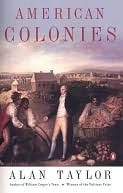More on this book
Community
Kindle Notes & Highlights
by
Alan Taylor
Read between
February 2 - February 21, 2021
A racialized sorting of peoples by skin color into white, red, and black was primarily a product, rather than a precondition, of colonization.
Preoccupied with dead matter, they appeared insensitive to living nature.
The “anthropocentric” implications of Christianity enabled western Europeans to develop the economic culture of capitalism (to varying degrees) during the sixteenth and seventeenth centuries.
By turning native peoples into commodities, for sale as plantation slaves, the invaders developed a method for financing the further destruction of their resistance.
Columbus’s slaughter and enslavement of Indians troubled the pious Spanish monarchs, who declared in 1500 that the Indians were “free and not subject to servitude.” But Ferdinand and Isabella failed to close the legal loophole exploited by Spanish colonizers. It remained legal to enslave Indians taken in any “just war,” which the colonists characterized as any violence they conducted against resisting natives.
In sum, the natives suffered from a deadly combination of microparasitism by disease and macroparasitism by Spanish colonizers, preying upon native labor.
The forced marriage of the two hemispheres meant a demographic boom for Europe but a demographic disaster for the Americas, with enduring consequences for world history.
The conquistador expeditions were private enterprises led by independent military contractors in pursuit of profit. The commander ordinarily obtained a license from the crown, which reserved a fifth of the plunder and claimed sovereign jurisdiction over any conquered lands.
In 1673 the governor of Cuba confessed, “It is hard to get anyone to go to San Agustín because of the horror with which Florida is painted. Only hoodlums and the mischievous go there from Cuba.”
Elites (including missionaries) possessed a powerful caste consciousness of their immense superiority over the common people of their own nation, whom they readily disciplined with pain and treated with contempt.
Indeed, the conquest and colonization of Ireland served as the English school for overseas empire, the English equivalent of the Spanish invasion of the Canaries. In Ireland, the English developed both the techniques and the rhetoric of colonial conquest. In Ireland, the English learned to consider resisting peoples as dirty, lazy, treacherous, murderous, and pagan savages, little if any better than wild animals, and to treat them accordingly.
As the historian Edmund S. Morgan has aptly argued, the colonial Virginians developed the American interdependence of elite rule, popular politics, and white racial supremacy.
Frontier wars urged poor whites to see a better future in the dispossession of Indians rather than in rebellion against their colonial elite.
Newly obsessed with racial difference, Chesapeake whites felt more equal despite the growing inequality of their economic circumstances. The new sense of racial solidarity rendered white Virginians indifferent to the continuing concentration of most property and real power in the hands of the planter elite.
In effect, seventeenth-century New England and the English West Indies developed in tandem as mutually sustaining parts of a common economic system. Each was incomplete without the other. New English freedom depended on West Indian slavery.
In English society, men got high status by accumulating property through market transactions, rather than by redistributing property as did the Indian chiefs. In the wild plants and animals of New England, the colonists saw potential commodities as particular items that could be harvested, processed, shipped, and sold to make a profit. Consequently, the New English disdained the Indians as “Lazy Drones [who] love Idleness Exceedingly” for failing to create more property from their abundant nature. Indeed, ignoring the Indians’ horticulture, the colonists dismissed the Indians as little better
...more
One native pointedly asked why his people should convert when “our corn is as good as yours, and we take more pleasure than you.” A colonist conceded that autonomous Indians avoided the praying towns because “they can live with less labour, and more pleasure and plenty, as Indians, than they can with us.”
Keenly listening to sermons and learning to read the Bible translated into their own language, some converts became close critics of colonial culture. Making the Bible their own, these praying Indians put their missionaries on the defensive by noting the many deviations of colonial behavior from Christian injunctions.


